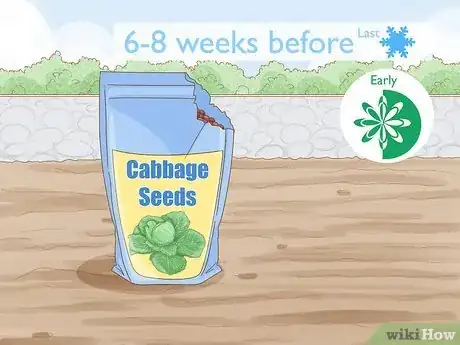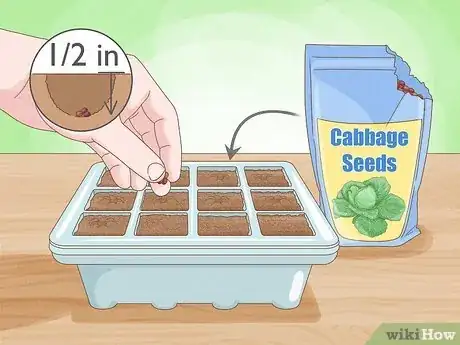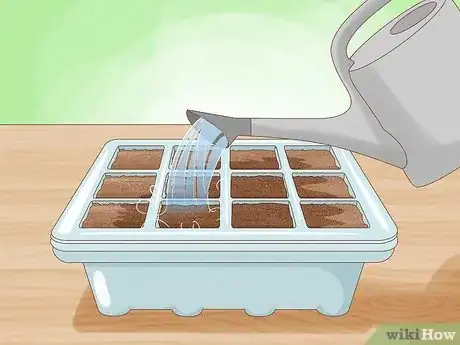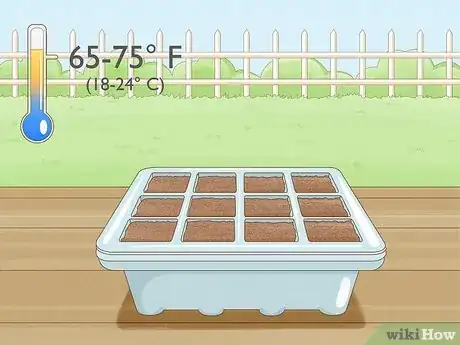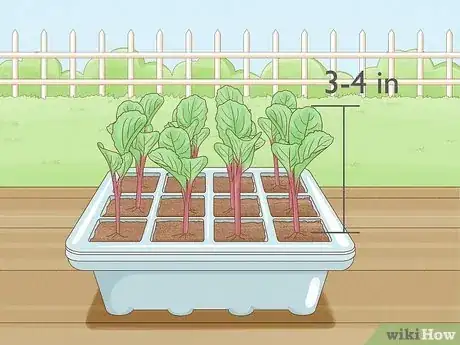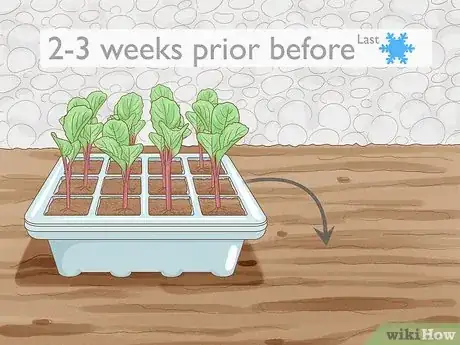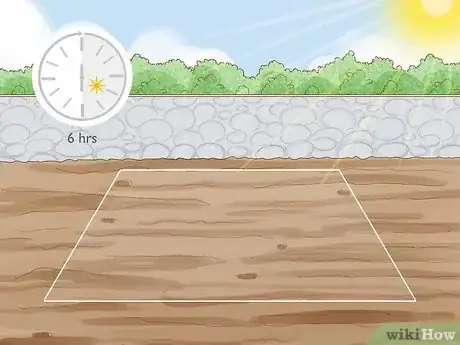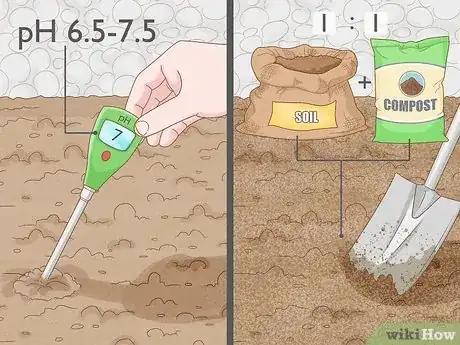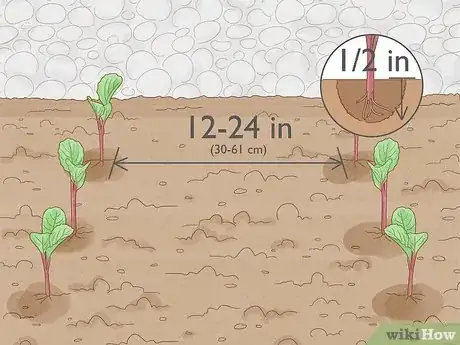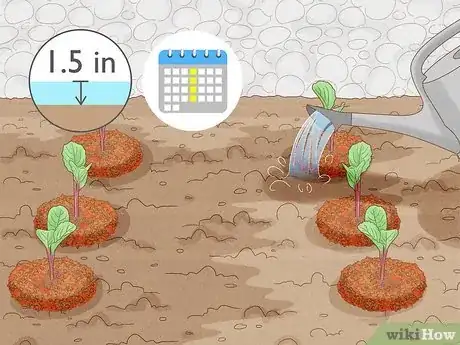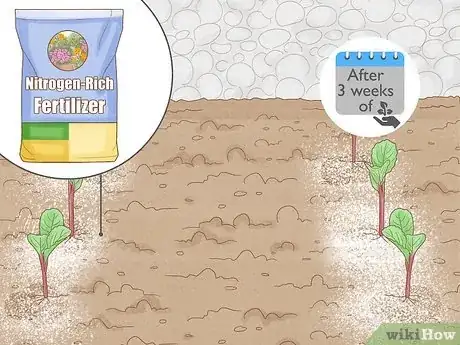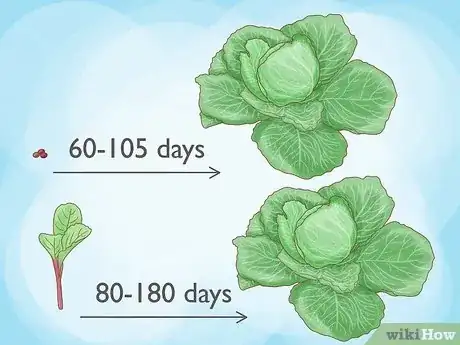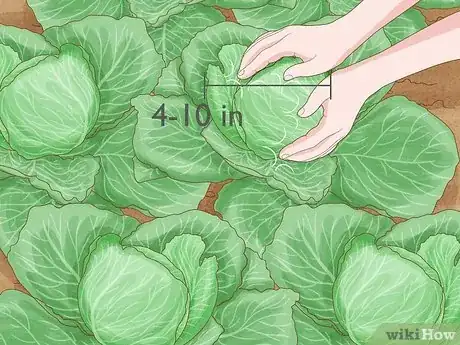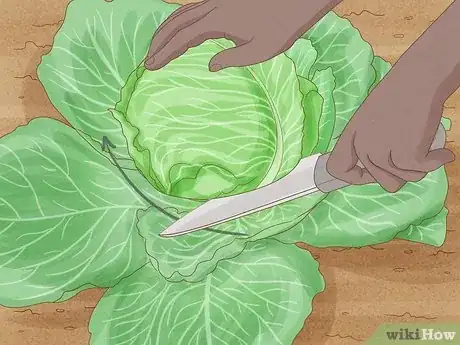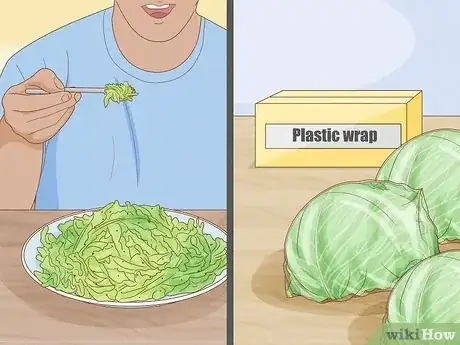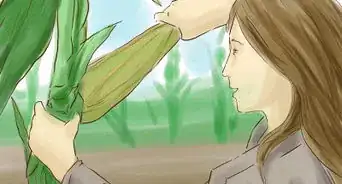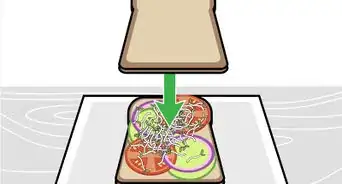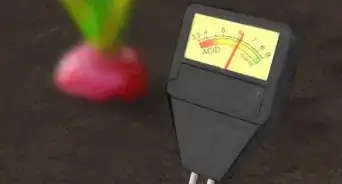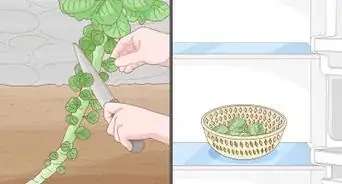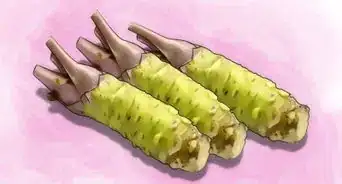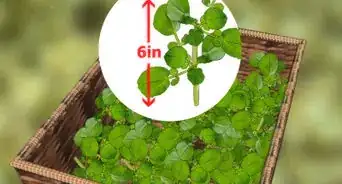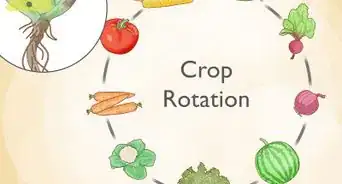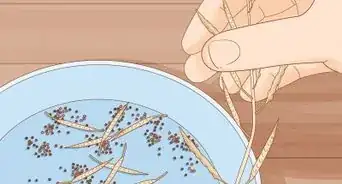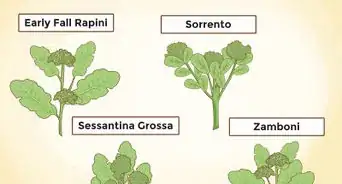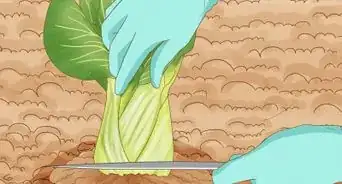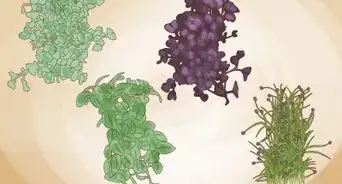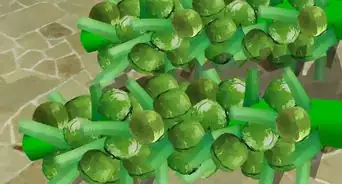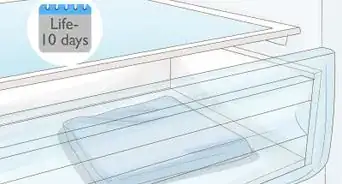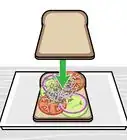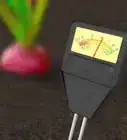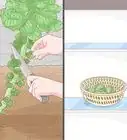This article was co-authored by Andrew Carberry, MPH. Andrew Carberry is a Food Systems Expert and the Senior Program Associate at the Wallace Centere at Winrock International in Little Rock, Arkansas. He has worked in food systems since 2008 and has experience working on farm-to-school projects, food safety programs, and working with local and state coalitions in Arkansas. He is a graduate of the College of William and Mary and holds a Masters degree in public health and nutrition from the University of Tennessee.
wikiHow marks an article as reader-approved once it receives enough positive feedback. In this case, 100% of readers who voted found the article helpful, earning it our reader-approved status.
This article has been viewed 172,422 times.
Cabbage is a delicious, nutritious, and versatile vegetable with dense leaves. It can be boiled, steamed, eaten raw, or even fermented to create sauerkraut. Cabbages like cool weather but lots of sun, and as long as the conditions are right, you may be able to get a spring and fall harvest. This particular vegetable can withstand some frost, but it cannot tolerate heat, so it will grow best in fall.
Steps
Starting Cabbage Seeds
-
1Pick the right time. Cabbages seed should be started inside in the early spring, six to eight weeks before the last frost. You can also plant them in late summer to harvest them in the fall. To determine the best time to plant the seeds, check the local frost forecast for your area.[1]
- Cabbage seedlings will be grown inside for between four and six weeks, and then transplanted outside a couple weeks before the last frost.
-
2Plant the seeds. Prepare seed starters by filling them with potting soil. With your finger, make a ½-inch (1.3-cm) hole in the center of each seed starter cell. Drop two or three cabbage seeds into each hole, and cover the hole with soil.[2]
- Potting soil is ideal for cabbage seeds because it’s fertile and drains well.
Advertisement -
3Water the seeds. Once you plant the seeds, add enough water to the soil to make it moist. As the seeds germinate and grow, keep the soil moist, adding more water as it begins to dry out.
-
4Maintain the temperature. Cabbage seeds germinate when the temperature is between 65 and 75 F (18 and 24 C). Store them inside or in a garden shed where the temperature will be maintained in this range. Once the seeds come up, move them to a place that gets plenty of sunlight, like a south-facing window.[3]
-
5Keep the seedlings inside until leaves form. As the cabbage seeds germinate and start to grow, sprouts will shoot up through the soil. Keep the cabbage seedlings inside until they're three to four inches tall, and have at least four or five leaves each.[4]
- The seedlings will take between four and six weeks to grow to this stage.
Transplanting and Growing Cabbage
-
1Determine when the last frost will be. It’s best to transplant cabbage to its outdoor location about two to three weeks prior to the last frost. Check the long-range weather forecast for your area to determine this date.
- When you know when the date for the last expected frost, schedule a date a couple weeks in advance of that to transplant your cabbage.[5]
- For fall plantings, set the plants out 6-8 weeks before the average first frost date of the year.
-
2Pick the right location. There are a few things that cabbages need to thrive, and sunlight is one of them. When choosing an outdoor location for your cabbage, look for somewhere that gets at least six hours of full sun each day.
- Avoid planting cabbages in the same garden beds as cauliflower, strawberries, broccoli, and tomatoes.
- Cabbages will thrive in gardens close to cucumbers and beans.[6]
-
3Prepare the seedbed. Cabbage loves fertile soil, so mix the soil in your seedbed with equal parts aged compost or manure. Water the bed so the soil is moist before transplanting the seedlings.
- The ideal pH for cabbage is between 6.5 and 7.5. You can test the pH of your soil with test strips, which are available at most department, garden, and hardware stores.[7]
- If you need to lower the pH, add more compost or manure to make the soil more acidic. To increase the pH, add pulverized limestone to the bed.
-
4Transplant the cabbage seedlings. Plant the seedlings at the same depth they were in the pots, about a ½ inch (1.3 cm) deep. Space them 12 to 24 inches (30 to 61 cm) apart, and in rows that are about 24 inches (61 cm) apart.[8]
- For the best results, pick a cloudy day to transplant the cabbage seedlings. This will help prevent shock to the fragile plants.
-
5Cover the soil with mulch. Add a 1-inch (2.5-cm) layer of mulch to the top of the soil. This will help keep the soil moist as the seedlings grow, protect the plants from pests, and help regulate the temperature of the soil.
- The ideal mulch for cabbage includes ground leaves, finely ground bark, or compost.
-
6Keep the soil moist. Cabbage plants will need about 1.5 inches (3.8 cm) of water each week. If you aren't getting enough rain, water the soil enough to keep it moist as the cabbages grow.
- Continue watering the cabbages until the plants approach maturity. At that time, stop watering them to prevent split heads.
-
7Fertilize three weeks after transplanting. When the cabbages start to grow new leaves and develop heads, amend the soil with fertilizer. This will happen about three weeks after transplanting, and at this time, the cabbages will need nitrogen-rich fertilizer.
- Good fertilizers for a cabbage patch include fish emulsions, liquid fertilizers, blood meal, and cottonseed meal.
Harvesting Cabbages
-
1Pay attention to growing time. Cabbage growing time depends on the variety, but it can take anywhere from 80 to 180 days for a cabbage to mature after the seed is planted.
- After transplanting the seedlings, the cabbages will need anywhere from 60 to 105 days to mature.[9]
-
2Do a squeeze test. When the cabbages start to mature, you can start doing squeeze tests on the heads to determine if they're ready for harvest. The base of the head should be between 4 and 10 inches (10.2 to 25.4 cm) across, depending on the variety.
- To do the squeeze test, squeeze the head of the cabbage with your hand. A solid and firm head is ready for harvest, but a loose and soft head needs more time to mature.
-
3Harvest the heads. When the cabbages are ready, use a sharp knife to remove the heads from the stems. Cut off the outer leaves and add them to the compost pile if they're healthy.[10]
- When the heads have been harvested, place them in the shade or into the fridge until you're ready to use or store them.
- When you harvest the cabbage heads, leave the stems in the ground to continue growing. Many cabbages will regrow new, smaller heads, and these can be harvested again in several weeks.
-
4Store extra heads. You can eat your harvested cabbages immediately, or store leftovers for later. Clean the cabbage heads under running water to remove dirt and insects. Set them on a clean towel to dry completely. You can store cabbage by:[11]
- Wrapping it loosely in plastic wrap and storing it in the fridge for up to two weeks.
- Storing it in a cold or root cellar for up to three months.
- Drying or freezing the leaves.
- Turning it into sauerkraut.
Expert Q&A
-
QuestionWhat are the main challenges regarding planting and growing cabbages?
 Andrew Carberry, MPHAndrew Carberry is a Food Systems Expert and the Senior Program Associate at the Wallace Centere at Winrock International in Little Rock, Arkansas. He has worked in food systems since 2008 and has experience working on farm-to-school projects, food safety programs, and working with local and state coalitions in Arkansas. He is a graduate of the College of William and Mary and holds a Masters degree in public health and nutrition from the University of Tennessee.
Andrew Carberry, MPHAndrew Carberry is a Food Systems Expert and the Senior Program Associate at the Wallace Centere at Winrock International in Little Rock, Arkansas. He has worked in food systems since 2008 and has experience working on farm-to-school projects, food safety programs, and working with local and state coalitions in Arkansas. He is a graduate of the College of William and Mary and holds a Masters degree in public health and nutrition from the University of Tennessee.
Food Systems Expert One of the biggest challenges is getting your cabbages planted out at the right time. Check with other growers in your area to see when they put theirs out.
One of the biggest challenges is getting your cabbages planted out at the right time. Check with other growers in your area to see when they put theirs out. -
QuestionWhat type of soil is good for planting cabbage?
 Sander1Community AnswerClay, as it holds water and nutrients (which cabbage really needs a lot of) very well.
Sander1Community AnswerClay, as it holds water and nutrients (which cabbage really needs a lot of) very well. -
QuestionWhere can I purchase cabbage seeds?
 Community AnswerHardware stores, specialty plant/farm supply stores, or even just your local department store during the growing season.
Community AnswerHardware stores, specialty plant/farm supply stores, or even just your local department store during the growing season.
References
- ↑ http://www.almanac.com/plant/cabbage
- ↑ https://www.youtube.com/watch?v=SohCJjY_bns
- ↑ http://www.motherearthnews.com/organic-gardening/vegetables/growing-cabbage-zm0z12aszkon
- ↑ http://www.harvesttotable.com/2009/01/how_to_grow_cabbage/
- ↑ http://www.almanac.com/plant/cabbage
- ↑ http://www.almanac.com/plant/cabbage
- ↑ http://www.harvesttotable.com/2009/01/how_to_grow_cabbage/
- ↑ http://www.harvesttotable.com/2009/01/how_to_grow_cabbage/
- ↑ http://www.harvesttotable.com/2009/01/how_to_grow_cabbage/
About This Article
To grow cabbage successfully, start your cabbage seeds indoors in early spring, about 6–8 weeks before the last frost. Once the seedlings are 3 to 4 inches tall and all danger of frost has passed, they are ready to be moved outside! Choose a spot that gets full sun and plant the seedlings 1/2 inch deep. Space them 12 to 24 inches apart and add a 1 inch layer of mulch around each plant. Check the soil regularly and keep it moist while your cabbages grow! For more tips from our Gardener reviewer, including how to harvest your grown cabbage, read on!
